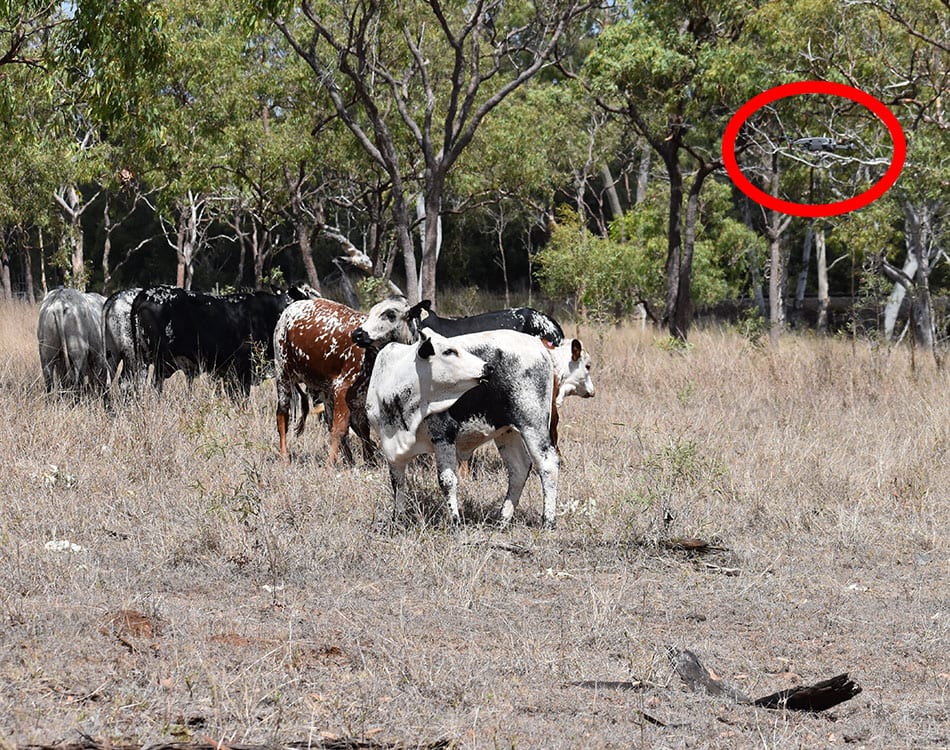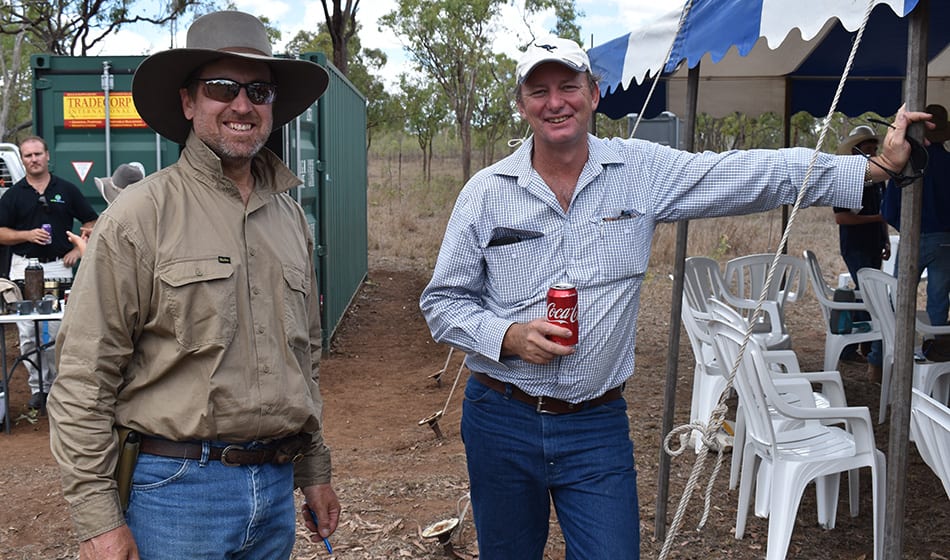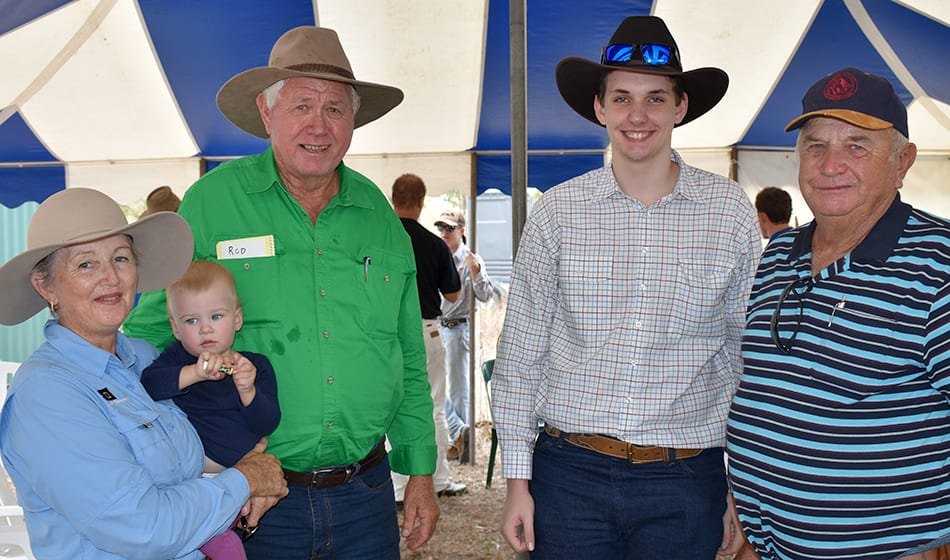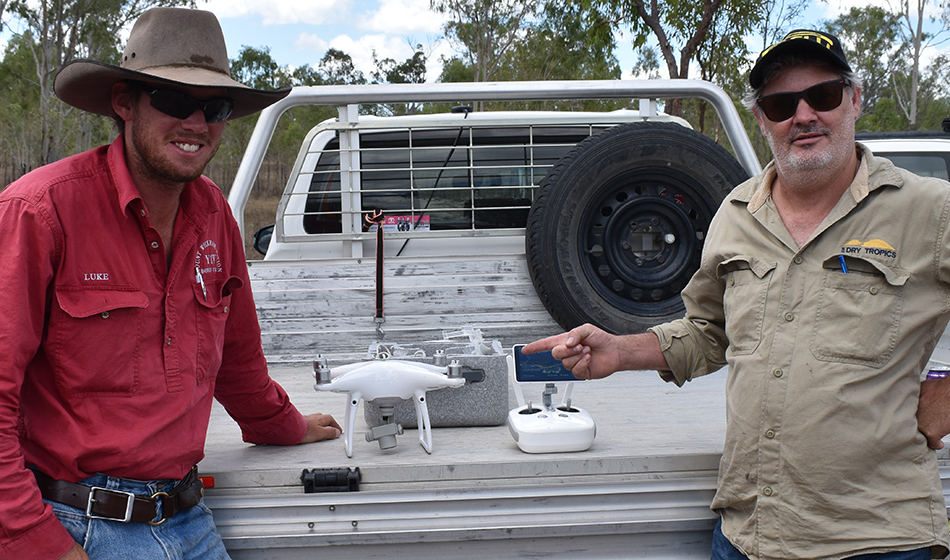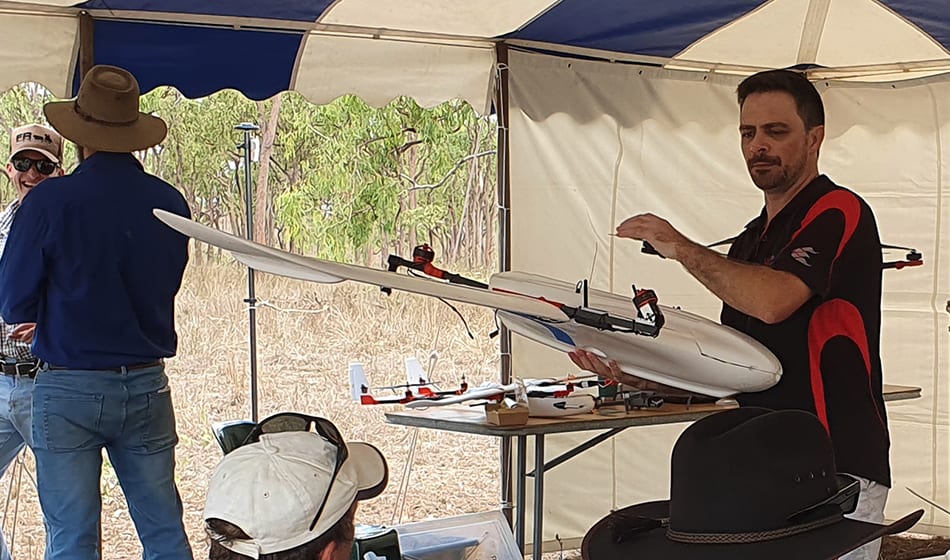
Drone pilot Lyle Gillham musters cattle watched by Peter Buckwell, Mt Flagstone Station, Woodstock (centre) and Ross Rea, Etonvale Station.
Mt Pleasant cattle get to see a drone for the first time…
Farmers finding new uses for versatile drones
People who work with cattle will be able to muster using a drone, but even the most skilled drone pilots with no cattle nous will fail.
That’s the steadfast opinion of veteran helicopter and drone pilot Lyle Gillham, one of the experts who demonstrated the efficacy of drone mustering at each of the two Drones in Agriculture workshops hosted by NQ Dry Tropics recently.
He proved he knew what he was talking about by demonstrating how a lightweight off-the-shelf drone could be used to round up cattle, including beasts that had never seen them before.
At Mt Pleasant Station, Collinsville, and again at Jervoise Station, Greenvale, Lyle was able to introduce the drone to cattle in the paddock, and, in less than 20 minutes, bring them calmly to him.
At Jervoise, he was able to steer the herd past the hayshed where about 30 spectators broke into spontaneous applause.
“Drones will never replace helicopters, but they are another tool the cattleman can use,” he said.
“You can get up high and see where the cattle are in amongst the trees and send the bikes or horses directly to them instead of spending half the day trying to find them.”
He said cattle responded to drones in much the same way as they did to helicopters, but because drones were so much smaller, it was imperative that the operator didn’t sit the drone directly over the cattle and allow them to get used to the idea that it couldn’t hurt them.
He said good technique was even more important with a drone.
“Get up high, see where they are, see where they’re going, then use the drone by dropping down briefly to turn or block them, then get back off them and go up high again quickly,” he said.
Licensing, practicality, versatility and future possibilities were topics covered by the presenters at both workshops.
Chad Nowak, a former international drone racing champion now working for UAS Pacific, talked about the rules and regulations and safe operation of drones.
He said the rules applied even in the most remote locations and strongly recommended people take the time to get training and an appropriate licence.
CEO of OTB spatial, Michael Kaminski focused on the cutting edge applications of the technology including using drones to inspect assets, and using advanced remote sensing software to measure vegetation density for forage budgeting.
He also talked about their application in weed treatment on farms.
NQ Dry Tropics’ staffers Josh Nicholls and Gav Rosetti explained how drones were used to produce imagery and survey data for communications and project planning purposes.
Jervoise Station grazier Greg Jonsson who, with wife Kerry, hosted the second workshop said the technology was impressive and definitely something the next generation would use.
NQ Dry Tropics Senior Grazing Field Officer Josh Nicholls said drones were another tool that would help graziers to move cattle more often, to rest paddocks and retain end-of-season ground cover.
The Jervoise Station workshop was part of the Grazing Resilience and Sustainable Solutions program funded through the Queensland Government’s Reef Water Quality Program and delivered by the Department of Agriculture and Fisheries, Burnett Mary Regional Group, Fitzroy Basin Association and NQ Dry Tropics.
The workshop at Mt Pleasant Station was hosted by the Landholders Driving change project, funded by the Queensland Government through the Queensland Reef Water Quality Program.
Ross Rea, from Etonvale, Bowen and Glen Rea from Kirknie Station, Home Hill
Rod and Wendy Barrett, holding grandchild Kelsey Kingwill, with Logan and Don Rea (right) from Kirknie Station, Home Hill.
Luke Woodhouse, Mt Wickham Station (left) with NQ Dry Tropics GIS Officer Gavin Rossetti.
Chad Nowak, UAS Pacific with a fixed-wing drone.


